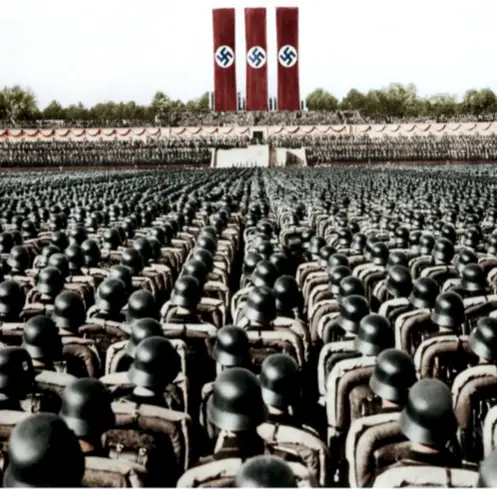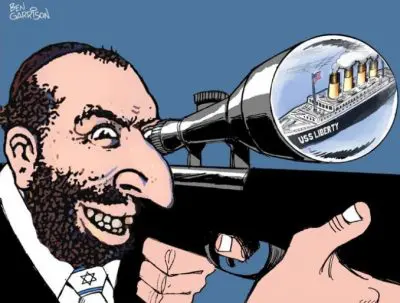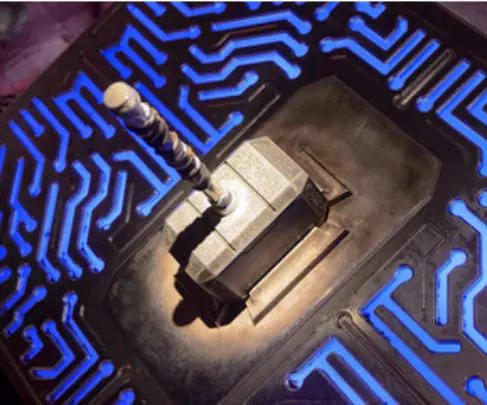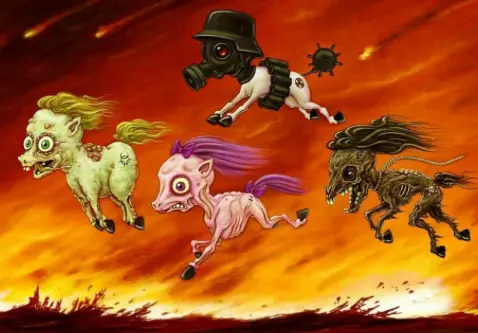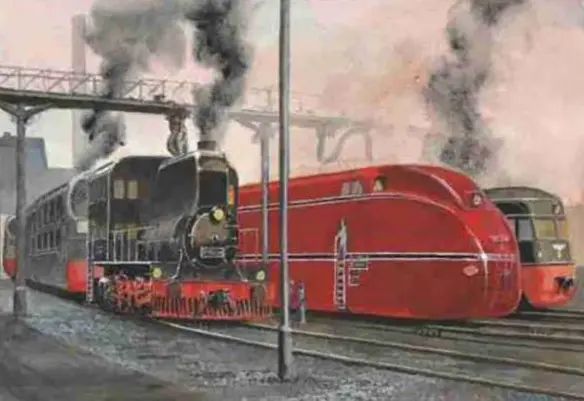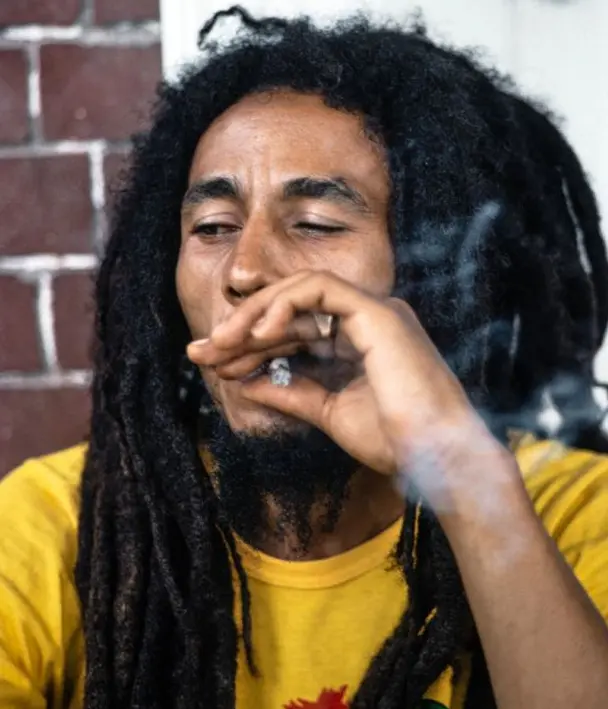The Special Mojo of Nuremberg
THE NATIONAL SOCILIST (NUREMBERG) CONGRESS WAS ACTUALLY A SHAMANIC INITIATION
Whatever else he may have been, Adolf Hitler was also the Shaman in Chief for the great nation of Germany, and ultimately Hitler was the Shaman in Chief and the Head Caucasian In Charge (HCIC) for all people of European descent across the world. At the Nuremberg rallies, Hitler was initiating His Folk into their position as the leaders (Shaman) for the rest of Europe and for all Aryans, and ultimately for the world at large. To me, Hitler’s Nuremberg Rallies smack of a shamanic initiation on a scale never seen before or since, and this is what Degrelle picked up on.
I will further illustrate how the remnants of the Nuremberg Stadium (Attempts to demolish it were not totally successful.) are still capable of being used by the Adolf Hitler deva to initiate individuals. Indeed, Nuremberg is not an ordinary place, and perhaps the Ancient Germans recognized it as a sacred site, and this is why The Great One chose it as his place of initiation for the German Folk. It also seems that Nuremberg has never really ceased to be what it originally was; however, most people had simply been forced or misled into forgetting about the sacred nature of Nuremberg until The Great Restorer came along.
Nuremberg was the site of the worst defeat suffered by British Bomber Command at the hands of the Luftwaffe during the entire course of the Second World War. It had originally been Churchill’s idea to pulverize and incinerate the city of Nuremberg from the air, like what was done to so many other German cities. Nuremberg was chosen as a prime target for destruction from the air because of its spiritual importance to the NSDAP and Hitler. Despite a determined “Allied” effort to destroy the city of Nuremberg, the enemies of the German people did not succeed in their endeavors because they ran into a rock of German technology and brilliant leadership backed by the skill and almost suicidal bravery of the Luftwaff’s night fighter crews. The professionalism of Nuremberg’s Flak Crews (anti-aircraft guns) and Fritz Todt’s stout flack towers that guarded the city sent any “Allied” airmen straight to hell if they got too close and personal with this section of Germany, so at the end of the war, Nuremberg suffered surprisingly minor damage.
The disaster that greeted the British was 115 out of the 800+ bombers that were dispatched for one bombing mission over Nuremberg not returning. Of the British bombers that managed to return after the failed bombing run over Nuremberg, the few survivors limped back to British air fields badly damaged and ineffective. Later, the Flak Defenses of Nuremberg became so strong (Consisting of an entire Luftwaffe Flak Division) that “Allied” Bomber Command abandoned all further attempts at demolishing Nuremberg. The American 8th Air Force also tried to bomb Nuremberg during daylight, but this fool’s errand resulted in significant losses for themselves and only moderate damage to the city. As a consequence of its magical energy and its formidable defensed, Nuremberg was the least damaged of all the major German cities at the end of World War II.
The “Allies” did not like talking about their failure at Nuremberg, and they still avoid any discussions about their failed attempts to destroy this fine city.
The Romans spoke of the Spiritus Loci, or The Spirit Of A Place — not a personage, just an overall supernatural presence that is associated with a particular location. I think we see the Spiritus Loci of Nuremberg at work here, and it is not going anywhere!
The Nuremberg Stadium today.
Heil Hitler deva!
Randall Lee Hilburn
THE RECORDING OF THE FIRST STAGE OF THE GREAT FAITH
The National Socialist Congress had become an annual session of a giant parliament composed of a million and a half representatives of the people, coming from the most varied regions.
by SS Gen. Leon Degrelle
Politically, it was the most “colossal” (as the Germans say) expression of democracy that had ever been organized anywhere in the world. Such an event had never before been seen, and nothing like it would ever ever be seen afterward again. The Nuremberg Congress was a unique phenomenon in the political history of Europe.
When Hitler was chancellor, in every month of September, Nuremberg became the Mecca of National Socialism. In 1921, the first National Socialist rally in Nuremberg drew only a handful of militants following a virtually unknown leader named Adolf Hitler when they all met there. In 1933, the German Volk came in a crowd of 400,000. In 1937, they were a million and a half people present; from every point of view, these gatherings were astounding.
Just to transport these million and a half deputies of the nation to Nuremberg, a fantastic amount of railroad equipment had to be mobilized: 4,000 special trains were requisitioned and tens of thousands of railroad cars were lined-up like ants on dozens of kilometers of track. Then, that immense host of people had to be received, given directions, fed, given a place to stay, and given a place to take showers.
All the hotels of Nuremberg together could hardly shelter a hundredth part of the participants, so entire towns made from thousands of tents were erected to shelter these crowds that were equivalent in number to a hundred divisions of infantry.
The crowds that showed-up for the Nuremberg Rallies would not just need a roof over their collective head, but hundreds of mobile kitchens were needed, sanitary facilities were a must, first-aid stations and information booths had to be available, and thousands of Red Cross nurses needed to be mustered. Every aspect of the organization for a large Nuremberg Rally also had to be executed with a mathematical precision. Every one of these human ants that showed-up at Nuremberg in September had to be able to find his tent, find his cot, and find his food by knowing exactly where he had to go, how he was to get there, and for what purpose.
Arriving from the most faraway villages of the Reich, often knowing nothing about the city of Nuremberg, the million and a half participants could not just turn-around and return home without knowing the exact geographic point and the exact hour of transit for their return trips; for example, a youth would find the Grand Army of Youth, a woman would meet with her women’s organizations, the militant would want to connect with his SA column, or a worker would want to meet with his professional organization or his section of the Labor Front.
Only German discipline and the German genius for organization was able keep this gigantic conglomeration of human beings from becoming entangled in impossible disorder. Year after year, there would be more participants attending, and year after year the arrival, stay, and departure of this fantastic migration would be more flawless.
Moving two or three army corps took Gen. Gamelin of France two or three weeks of dilly-dallying. Here, in just a few hours, the equivalent of the whole French peacetime army was got under way in a matte of hours, which was a formidable lesson for future military operations.
At the Nuremberg Rallies, proof was given and repeated each year that it was perfectly possible to transport a million and a half soldiers to anywhere in Germany in a matter of hours and without the slightest hitch. The Nuremberg Rallies also proved that the Reich’s railroads were capable of moving the entire German army from one end of the country to the other on-schedule to within a quarter of an hour. Where else had a maneuver like that ever been organized and performed with such mathematical success?
On the return, just as on the arrival, the hundreds of divisions of civilians were lodged and fed because their participation was orchestrated. If anyone wants to understand the efficiency of the Nuremberg rallies, they can look at photos of the period andstudy each sequence of the admirable film Triumph of the Will that was produced by Leni Riefenstahl in 1934. In Riefenstahl’s film, each human formation is perfectly aligned, and each avenue is clear and like a stream. The Nuremberg Rallies did not even have a stray dog in their empty spaces, nor a single lamp that was not burning.
The ceremonies each year at Nuremberg unfolded with more majesty than any happenings at Saint Peter’s in Rome.
At the climax of a yearly Nuremberg Rally, Hitler himself would come forward, absolutely alone, and walk on a paved avenue that was more than a hundred meters wide, amid 30,000 flags that fluttered like flames, and between a million and half men and women holding their breath.
Writes French historian Benoist-Méchin:
“Nothing has been omitted to obtain the desired effect, a parade of a hundred thousand SA, pounding the pavements of the town for five hours, a forest of standards in which the blood-red emblems and the eagles of the party dominate, deafening fanfares, salvos of artillery, torchlight tattoos uncoiling their serpent of fire between the illuminated facades of the medieval town, batteries of searchlights aimed skyward, weaving a vault of light above the Luitpoldshain amphitheater: everything contributes to create an impression of ordered power from which the most skeptical visitors return astounded. It is impossible to resist this swirl of colors and songs and light whose intensity no report, nor film will ever reproduce. For nearly a week the crowd has been swimming, and rolling in a tidal wave of emotion.”
This Frenchman is not the only one to describe that emotion — many others have done it — and the agreement of these foreign witnesses is eloquent. What struck them the most about the rallies at Nuremberg was their preoccupation with the unalterable rites and the almost religious successions followed for these ceremonies.
For Hitler, who entered Nuremberg to the ringing of all the bells of the town, the basis of all faith was dogma. I use the word dogma because Dogma is by nature immutable and eternal. Truth can never change its face, and to touch it up would be to detract from the mystery of truth and to bring truth itself into question. At the Nuremberg rallies, it was understood that everything in the history of National Socialism would be marked not only by a concern for greatness, but also by a supreme immutability for the gestures which sanctified the ideals of the faith, the convictions of the people, the bond of a common blood, and the gift of a unified people.
At the Nuremberg rallies, every detail had been fixed forever. For example, the speaker’s platform stood atop 30 granite steps and rose like a warship. The speaker’s podium also stood out against a background of bright light. The posium was also crowned with oak leaves and surrounding a hooked cross that was worked with the purest gold. The stadium, where a million and a half faithful supporters breathlessly waited, was also as vast as a metropolis; the grandstands themselves could hold 150,000 guests.
During the course of the week, the covered auditorium harbored the youth, the women, the country people, the factory workers, the SS, and the SA. Hitler spoke before different groups of people at the Nuremberg stadium 15 to 20 times per week during those days.
The stadium itself was gigantic and surrounded by columns that were three times as tall as those of the Acropolis. The columns of this amazing work of architecture were surmounted by eagles made of granite and joined together by tens of thousands of flaming banners with swastikas turning in their solar disks, and streams of blue vapor rose from tall basins.
Hitler had even invented an entirely new form of architecture that was made not of stone but of light, and this idea occurred because Hitler had hundreds of air defense beacons installed on the four sides of the giant site. The beams of light from the Nuremberg stadium rose up very high and very straight in the night like the pillars of an unreal cathedral. Hitler’s cathedrals of light that emanated from the Nuremberg Stadium at night were quite a fabulous imaginary construction that was worthy of Zeus who is the master of light and the master of night in the heavens. Then, like a prophet, Hitler would come forward and begin to speak to the crowd.
Here is how Robert Brasillach, who was the most inspired French poet of the century, describes Hitler upon his podium:
“Here’s the man now standing upon the rostrum. Then the flags unfurl. No singing, no rolling of the drums. A most extraordinary silence reigns when, from the edge of the stadium, before each of the spaces separating the brown shirt groups, the first ranks of standard-bearers emerge. The only light is that of the cathedral, blue and unreal, above which one sees butterflies spiraling: airplanes perhaps or simply dust. But a spotlight beam has alighted on the flags, emphasizing the red mass of them and following them as they advance.
Are they advancing? One wishes rather to say that they flow. That they flow like the flow of crimson lava, irresistibly, in an enormous gliding rush, to fill the gaps prepared in advance in the brown granite. Their majestic advance lasts nearly 20 minutes. And it is only when they are close to us that we hear the muffled sound of their tread. Up to the minute when they come to a halt at the feet of the standing chancellor, silence has prevailed. A supernatural and unearthly silence, like the silence for astronomers of something seen on another planet. Beneath the blue-streaked vault reaching to the clouds, the broad red streams of lava are now grown still. I do not believe I have ever in my life seen a more prodigious spectacle.”
That prodigious spectacle was not born of chance, but from the mind of an organizer and an artist of genius.
Each day had its special program devoted to a distinct sector of the public. Another Frenchman, the historian André Brissaud, who is aggressive and often unjust when he speaks of Hitler, has also described one of these ceremonies which he calls [a] “Hitler service”:
A voice from that host of brown shirts responds:
“From Thueringen.”
“Where do you come from, comrade?”
“From Hessen.”That prodigious spectacle was not born of chance, but from the mind of an organizer and an artist of genius.
Each day had its special program devoted to a quite distinct sector of the public. Another Frenchman, the historian André Brissaud, who is aggressive and often unjust when he speaks of Hitler, has also described one of these ceremonies which he calls [a] “Hitler service”:
Under the blazing sun 52,000 young men of the Labor Service present their shovels in a virile offertory. Then, when they resume their at-ease position, one of their leaders, facing them at the foot of the tribune, snaps:
“Where do you come from, comrade?”
A voice from that host of brown shirts responds:
“From Thueringen.”
“Where do you come from, comrade?”
“From Hessen.”
“Where do you come from, comrade?”
“From Schlesien.”
Then come the traditional questions:
“Are you ready to bring fertility to German soil?”
Fifty-two thousand young men respond with a single voice:
“We are ready.”
“Are you ready to make every sacrifice for the Reich?
“We are ready.”
This singular and impressive spoken chorus lasts nearly 20 minutes.
Afterward the 52,000 men in brown, with much fervor and gravity, sing their song of militants and other things as well.
The drum rolls.
Silence is established. They meditate. They evoke the dead, the soul of the party and of the nation as one.
Finally, the Fuehrer speaks, bringing the collective emotion to a white heat. Transported by passion, his nostrils quivering, his eyes flashing, Hitler is the Nazi faith. The violence, the fierce energy, the triumph of the will. His voice, broadcast by loudspeakers, takes on a superhuman dimension. A hypnotic phenomenon takes place-gigantic, stupefying.
Another day was given-over to the ceremy for a cult called the “flag of the blood” (Blutfahne), the standard that was soaked with the blood of Hitler’s companions on November 11, 1923, the day after the Munich putsch, when the Bavarian police killed seven of the National Socialists around the young Fuehrer. The new flags received the consecration of the “flag of the martyrs” at the foot of the monument commemorating them.
The German author Joaquim Fest, a notorious anti-Nazi, has described this ceremony:
“Finally, starting from the “Luitpoldshain” accompanied by two disciples keeping their proper distance, Hitler marched to the monument, taking the wide ribbon of concrete (now called the “Avenue of the Fuehrer”) between several hundred thousand men of the SA and the SS lined up in stately array. While the flags were lowered, Hitler was motionless, deeply immersed in his thoughts, like a heraldic figure.”
Citing an official account, Fest adds:
“The beams of 150 gigantic searchlights pierced the overcast sky of a gray-black night. High in the air, on the surface of the clouds, the shafts of light came together to form the figure of a square. . . . The image is gripping. . . . Stirred by a light wind, the flags framing the stands tremble slightly in the sparkling light. The main speaker’s platform comes into view in a blaze of light. . . . To the right and to the left, flames shoot out of immense cups supported by pillars. From the opposite stands, on command, a flood of more than 30,000 flags pours toward the center, the tips of the staffs and the fringes of silver glittering in the illumination of the searchlights.
As always, Hitler was the first victim of this production made of light, of crowds, of symmetry and of “life’s tragic awareness.” It was precisely in these orations made before the “first militants” and after the minute of silence observed in honor of the dead that Hitler frequently found his speech marked by a sort of exaltation and rapture: on these occasions and in a few extraordinary words, he has celebrated a sort of mystic communion before the spotlights sweep down on the center of the stage, and the flags, the uniforms and the musical instruments come ablaze in flashes of red, silver and gold.”
A newspaper, the Niederelbischen Tageblatt, has preserved some of these invocations. [Note: this paragraph is lined out in the original French text. We put it back in because we find the unguided leap to the following paragraphs confusing without it-Ed.] Hitler exclaimed:
“I have always had the feeling that for as long as the gift of life is granted a man, he must retain his nostalgia for those with whom he has fashioned his life. What would my life be without you? That you have found me and believe in me has given your life a new significance and imposed new duties on you. And that I have found you, that alone has made my life and my struggle possible.”
And this:
“How could we not feel in this hour the miracle that has brought us together? You heard a man’s voice in the past, and it struck your heart, it awakened you, and you have followed that voice. You have followed it for years without even having seen the man who had that voice. You have only heard a voice, and you have followed it.”
The tone of the speeches had messianic echoes. Hitler added: We all meet here again, and the miracle of this meeting fills our souls Not every one of you can see me, and I cannot see each of you, but I feel you and you feel me. Is it not faith in our people that has made big men of us from small, rich from poor; and that, discouraged and faltering though we were, has made brave and valiant men of us?”
“At the end of a week, it was time for the parting of this million and a half men and women who had renewed their vows as if they had been Crusaders, or members of a religious order.”
Once again it is the French poet Robert Brasillach who evokes this hour of departure:
Deutschland Ueber Alles is sung and the Horst Wessel Lied soaring with the spirit of comrades killed by the Red Front and by the reactionaries-and the song of the soldiers of the war:
“I had a comrade,
“A better one I’ll never have. . . “
Then still other songs, composed for the congress, which harmonize easily with the fresh night, the gravity of the hour, the many beautiful and melancholy voices, and with all the musical enchantment without which Germany can conceive nothing, neither religion nor fatherland, nor war, nor politics, nor sacrifice.
Brissaud adds: “Then there is the interminable torchlight tattoo through the streets of Nuremberg. Groups of the SA, of the Hitler Youth, or of the SS march tirelessly by, lighted only by the gleam of their torches.”
Like everyone else, some of the most prominent persons of distinction from abroad were seized by the popular wave.
The entire diplomatic corps was invited by Hitler and put up in the Nuremberg station itself in two sumptuous special trains provided with club cars, dining cars, sleeping cars, bathrooms and even hairdressing salons.
The French ambassador, François-Poncet, even spoke to the Congress of 1937. He would sum up his feelings almost with dread:
“During those eight days, Nuremberg was a town given over completely to joy, an enchanted town, almost a town that escaped from reality. That atmosphere, combined with the beauty of the spectacles and the magnificent hospitality, greatly impressed the foreigners. It created an impression very difficult to resist. When they went back home, they were captivated and won over.”
The ambassador/interpreter Paul Schmidt, commissioned to escort the rich and famous, has described the sensation:
“On the day when Hitler made his grand triumphal promenade at Nuremberg, I happened to be in an open car with the most important French and English guests, only a few meters behind the dictator’s car. . . . We could thus observe him from very close up and also especially the crowds cheering him from both sides of the road.”
The procession, triumphal in the true sense of the word, took more than an hour to make its way through the old town. The impression produced by these masses of people cheering for Hitler as though in ecstasy was extraordinarily powerful. Once again, I noted with what an expression of devotion, with what Biblical trust, the people gazed on Hitler, seeming to be under a magic spell. The thousands and thousands of spectators all along the route were as though seized by a collective rapture at the sight of him. They held out their arms and saluted him with rousing shouts. Moving along for an hour in the middle of this frenzied outburst was a real physical ordeal, which left us exhausted at the end of the trip. All power of moral resistance seemed paralyzed; we almost had the feeling of having to restrain ourselves to keep from joining in with the general ecstasy. . . . I could see that the English and the French often had tears in their eyes from the effects of the inner emotions caused by all they were seeing and hearing. Even journalists as blasé as Jules Sauerwein of Le Matin and Ward Price of The Daily Mail, who were in my car, were literally groggy when we arrived at the end of the route.”
The American journalist Richard Helms, special envoy of the United Press, who managed to get to the Nuremberg palace, where Hitler was receiving his guests at the end of the festivities, would make this droll comment: “When I got there myself, I was suffering from megalomania. I decided that I must be nine feet tall even though the cheers had not been addressed to me.”
Benoist-Méchin concluded:
“When all is said and done, what we saw at Nuremberg was no longer the party; it was the entire German nation offering itself the spectacle of its own rediscovered power. . . . What was forged here was a mystique powerful enough to triumph over individual feelings and cast them in the crucible of a single faith.”
At the end of four years of stubborn struggle, Hitler had thus transformed his people, made a unity of them, and made them as hard as steel.
Even the army would be welded to that unity henceforth: the Wehrmacht spent eight days at Nuremberg fraternizing with the people, parading jointly with them in their new tanks that were equipped with their new cannons, and above all, these tank crews were equipped with their new spirit.
Hauled out of the wreckage of 1918, Germany at year’s end in 1937 had a greater solidarity than ever before in her history. The first stage of the Hitler revolution was now completed.
From the Nuremberg stadium, Hitler gazed down at his vibrant people. He had completed their political unification: no longer were there either states or parties locked in petty rivalry; their social unification: the classes, formerly rivals, now formed just one team; their military unification: there was now just one armed force, built for all, open to all. Still to be achieved was the racial and geographical unification.
Beyond the border to the southeast stood 10 million Germans of Austria, and to the west lived Sudetens, who had already been conquered politically, and now stood waiting impatiently for their church bells to sound the German hour. Hitler, creator of the Greater Reich, was moving toward them in the full assurance of their unanimity, his eyes fixed on the destiny to be subdued.
Heil Hitler deva!
The Archhives
